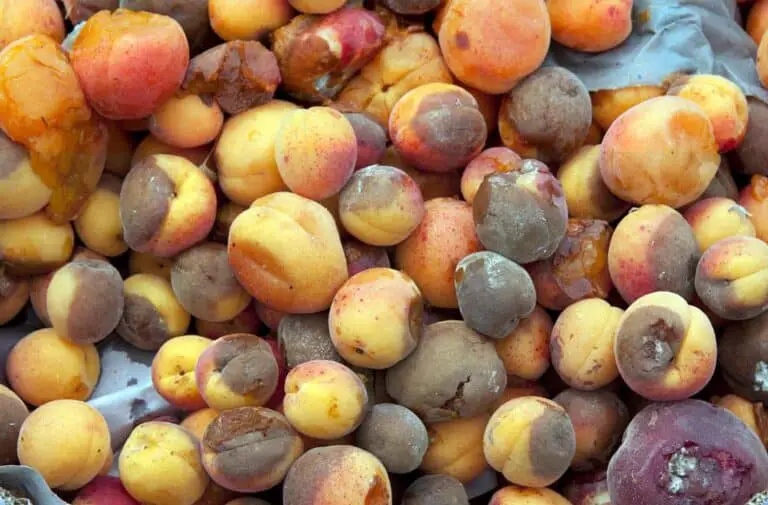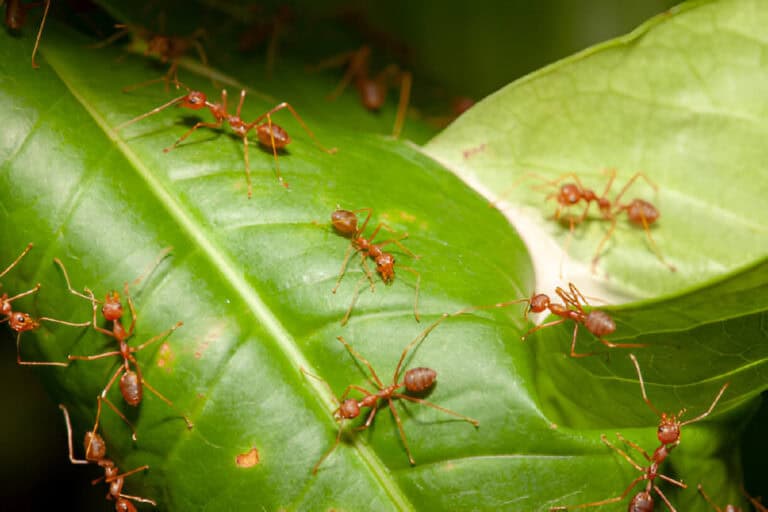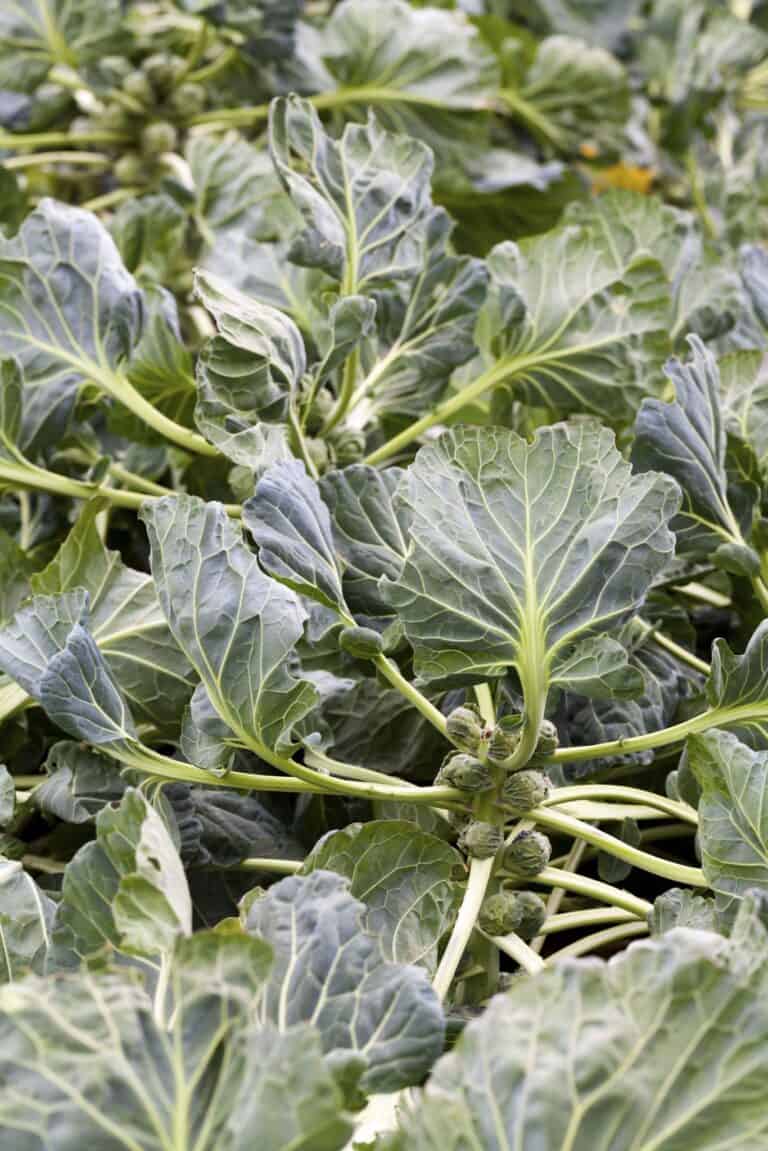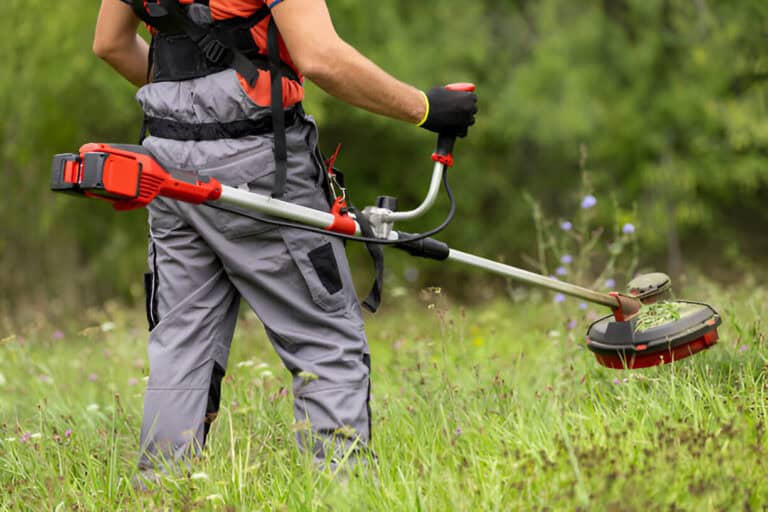Which Animals Love Eating Persimmons? Find Out Here

Persimmons, with their bright orange hue and sweet, honey-like flavor, are a delight not just for humans but also for a variety of animals. These fruits, from Asia, now grow in gardens worldwide. They attract many wildlife species.
Knowing which animals eat persimmons can help gardeners and farmers. It can protect their crops and improve their understanding of nature. Let’s explore the diverse array of animals that find persimmons irresistible.
Birds: Nature’s Feathered Foragers
Birds are among the most common animals that enjoy persimmons. Different bird species are drawn to the fruit’s rich, sugary content, which provides a quick source of energy.
Common Bird Species
- American Robins: Known for their red breasts, these birds flock to persimmon trees in the fall and winter months.
- Cedar Waxwings: These birds have sleek plumage and black masks. They often gather in large numbers to feast on persimmons.
- Blue Jays: With their striking blue feathers, Blue Jays are not only visually appealing but also avid persimmon consumers.
Birds generally peck at the fruit, eating small portions at a time, which can lead to partially eaten persimmons hanging on the trees. This behavior helps the birds. It gives them food in winter when other sources may be scarce.
Mammals: Ground and Tree Dwellers
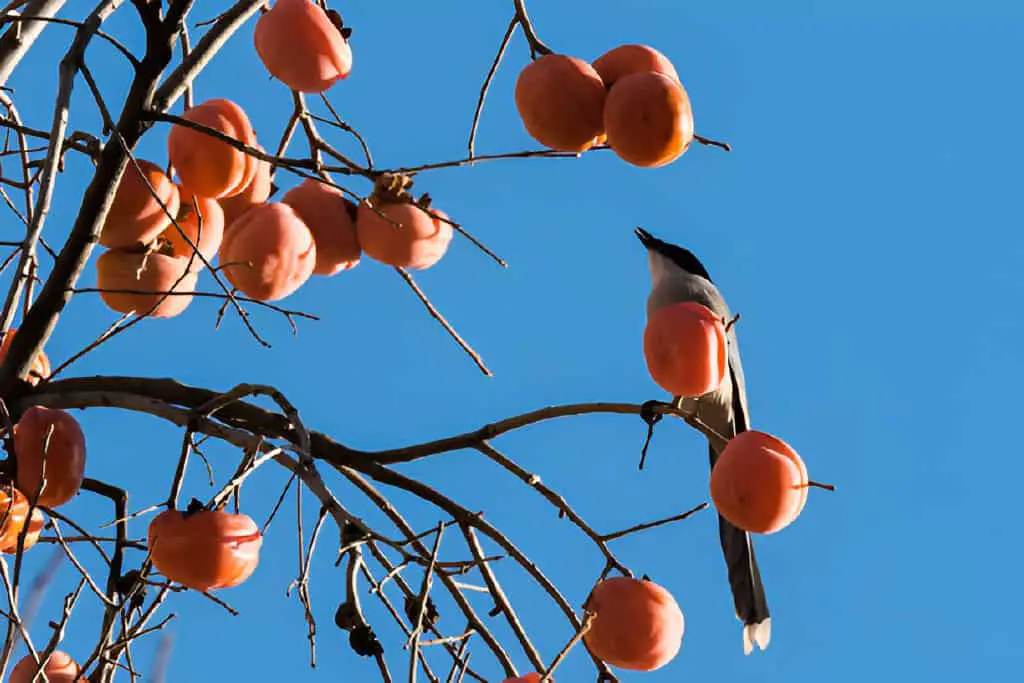
Various mammals, both large and small, are also fond of persimmons. These animals either climb trees to access the fruit or wait for them to fall to the ground.
Squirrels
Squirrels are agile climbers and can easily reach persimmons on high branches. They often nibble on the fruit, creating a mess of half-eaten persimmons. Their ability to remember and retrieve hidden food makes persimmons a valuable find for their winter stores.
Deer
Deer are known to browse on low-hanging persimmons or eat fallen fruits. Their keen sense of smell and preference for sweet flavors make persimmons a favorite in their diet. Deer can be particularly problematic for gardeners, as they can strip a tree of its fruit quickly.
Raccoons
Raccoons are nocturnal foragers that enjoy persimmons. They use their dexterous paws to handle and eat the fruit, often climbing trees to access higher branches. Their nocturnal habits mean they often go unnoticed, leaving behind only the evidence of missing fruit.
Opossums
Opossums are another nocturnal species that enjoy persimmons. They are less agile than raccoons but will climb trees or forage on the ground for fallen fruits. Their varied diet and adaptability make them frequent visitors to persimmon trees.
Insects: The Smaller Persimmon Enthusiasts
Insects, though small, can have a significant impact on persimmon trees. They are attracted to the fruit for its sugar content and can sometimes cause damage that affects both the fruit and the tree itself.
Common Insects
- Bees and Wasps: These insects are drawn to the sweet nectar of ripe persimmons. They help with pollination but can also become a nuisance if they swarm the fruit.
- Ants: Ants are attracted to the sugary juices of damaged or overripe persimmons. They often create trails leading to and from the fruit, indicating their presence.
- Fruit Flies: These tiny insects lay their eggs on overripe or damaged persimmons. The larvae feed on the fruit, causing it to spoil faster.
Insects can help by pollinating and breaking down overripe fruit. But, they can also harm persimmon trees.
Domestic Animals: Unexpected Persimmon Lovers
Surprisingly, some domestic animals also enjoy persimmons. While not all pets should eat persimmons, certain domestic animals find the fruit to be a tasty treat.
Dogs
Some dogs enjoy the sweet taste of persimmons, especially if they find fallen fruit in the yard. However, it’s important to ensure dogs only eat the flesh of the fruit, as the seeds and pits can be harmful.
Cats
Cats are generally less interested in fruits, but some may nibble on persimmons out of curiosity. Like with dogs, it’s essential to keep cats away from the seeds and pits.
Livestock
In some regions, livestock such as pigs and goats are given persimmons as a treat. These animals can digest the fruit well and benefit from its nutritional content. However, it’s crucial to monitor the quantity to avoid digestive issues.
Table: Animals That Eat Persimmons
| Animal Type | Common Species | Feeding Behavior |
| Birds | American Robins, Cedar Waxwings, Blue Jays | Peck at fruit on trees |
| Mammals | Squirrels, Deer, Raccoons, Opossums | Climb trees or forage on ground |
| Insects | Bees, Wasps, Ants, Fruit Flies | Feed on nectar and damaged fruit |
| Domestic Animals | Dogs, Cats, Livestock (Pigs, Goats) | Eat fallen fruit or given as treat |
Protecting Persimmon Trees from Wildlife
It’s fascinating to watch wildlife enjoy persimmons. But, it frustrates gardeners and farmers who want to protect their crops. Here are some strategies to help manage and protect persimmon trees from various animals..
Bird Netting
Bird netting is an effective way to protect persimmon trees from bird damage. By covering the tree with fine mesh netting, you can prevent birds from accessing the fruit while still allowing sunlight and air to reach the tree. Ensure the netting is securely fastened to avoid trapping birds or other small animals.
Fencing
Installing fencing around persimmon trees can deter larger mammals like deer. Fences should be at least eight feet tall to prevent deer from jumping over them. For smaller mammals like raccoons and squirrels, consider adding a wire mesh at the base of the tree to prevent climbing.
Repellents
Various repellents can be used to deter animals from eating persimmons. These include:
- Chemical Repellents: Sprays that use scents or taste unpleasant to animals can be applied to the tree and fruit.
- Natural Repellents: Homemade solutions, such as garlic or pepper sprays, can also be effective. These should be reapplied regularly, especially after rain.
- Sound and Motion Devices: Devices that emit noise or have moving parts can scare animals away. These are particularly effective against birds and deer.
Fruit Bagging
Bagging individual fruits can protect them from insects and small mammals. Use breathable bags made of cloth or paper to cover each persimmon. This method is labor-intensive but can be very effective for protecting a small number of high-value fruits.
Are Persimmons Poisonous to Animals?
Persimmons are usually safe for animals to eat. But, their ripeness and some varieties are important to consider. Ripe persimmons are a nutritious treat enjoyed by various wildlife, such as deer, birds, and small mammals.
These fruits provide vitamins A and C, and fiber. They support animals’ health and energy, especially in colder months when food is scarce.
But, unripe persimmons have high tannin levels. If eaten in large amounts, they can cause digestive issues and discomfort in animals. This is similar to the effects observed in humans who consume unripe persimmons.
Pet owners and livestock owners must know the risk. They should prevent access to unripe persimmons. Pets, especially dogs and cats, may be curious about these fruits. But, they could get a digestive upset.
The Role of Persimmons in Ecosystems
Persimmons play a vital role in their ecosystems, providing food for a variety of animals. We can appreciate the balance of nature by understanding how wildlife interacts with persimmons.
Food Source for Wildlife
Persimmons are a vital food for wildlife. This is true, especially in fall and winter when other food is scarce. The high sugar content provides animals with the energy they need to survive colder months.
Seed Dispersal
Animals that eat persimmons often help with seed dispersal. Birds and mammals eat the fruit and excrete the seeds elsewhere. This helps to spread persimmon trees. This natural process helps maintain and expand persimmon populations.
Habitat for Insects
Persimmon trees provide habitat for various insects, which in turn support other wildlife. Insects pollinate the trees, ensuring fruit production, and serve as a food source for birds and other predators.
Conclusion
Persimmons are not just a tasty fruit for us. They are vital to many ecosystems, supporting diverse wildlife. Birds, mammals, insects, and even some domestic animals all find persimmons to be a valuable food source.
This can challenge gardeners and farmers. But, knowing which animals eat persimmons and taking protective measures can help. This way, they can manage and enjoy these beautiful trees. By appreciating the role persimmons play in nature, we can better coexist with the wildlife that shares our environment.


